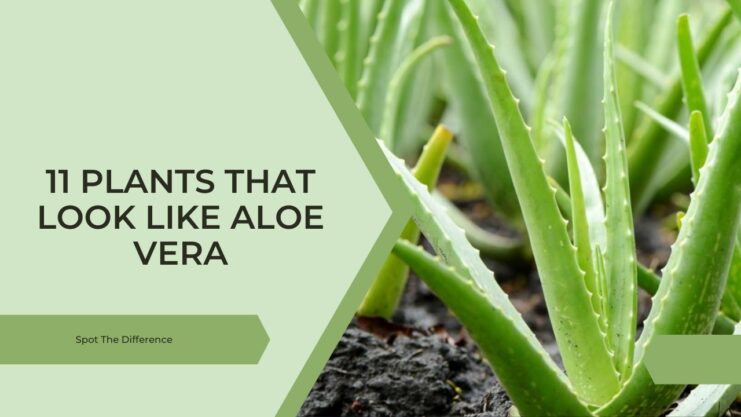Aloe Vera is a popular houseplant known for its medical properties and unique, spiky appearance. But did you know that there are several plants that look very similar to Aloe Vera? In fact, some of these plants are even poisonous! In this article, we’re going to look at 11 plants that resemble Aloe Vera and 7 potentially dangerous ones, so you can easily spot the difference.
1. Haworthia
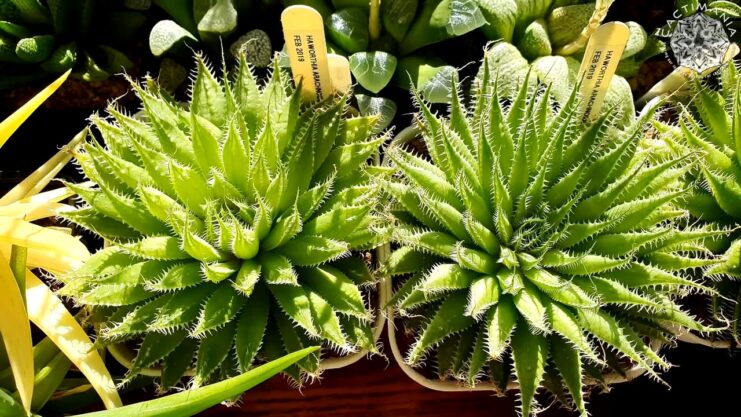
Like Aloe Vera, Haworthia is a succulent that originates from South Africa. They have similar rosette forms and thick, fleshy leaves but are generally smaller in size. Haworthia leaves also often have a transparent tip, unlike Aloe Vera.
Haworthias are compact succulents. They’re small plants, rarely growing larger than 8 inches in diameter. These South African natives are low maintenance, requiring well-draining soil, infrequent watering, and bright but indirect light.
They can also thrive under artificial lights, making them ideal for office environments. Haworthias are slow growers and propagate through offsets — small plants that sprout from the base of the mature plant.
2. Agave
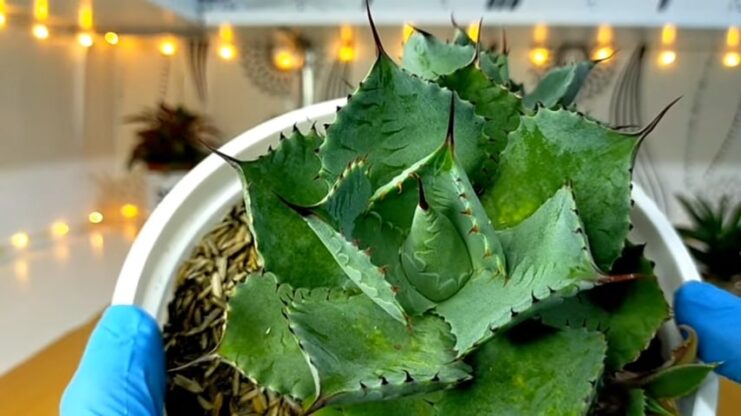
Agave plants are often mistaken for Aloe Vera because of their similar pointed leaves. However, Agave leaves are usually broader, their tips are sharper, and they have a different flowering pattern. Also, some Agave species can grow much larger than Aloe Vera.
Agaves are large, dramatic plants native to Mexico and the southwestern United States. They feature rosettes of thick, fleshy leaves with pointed ends that may or may not have spines.
These plants are often confused with cacti due to their arid native habitats and similar appearance. Unlike Aloe Vera, Agave plants flower once in their lifetime and then die in a process called monocarpic senescence. Agave nectar, a popular natural sweetener, is harvested from several species of Agave.
3. Gasteria
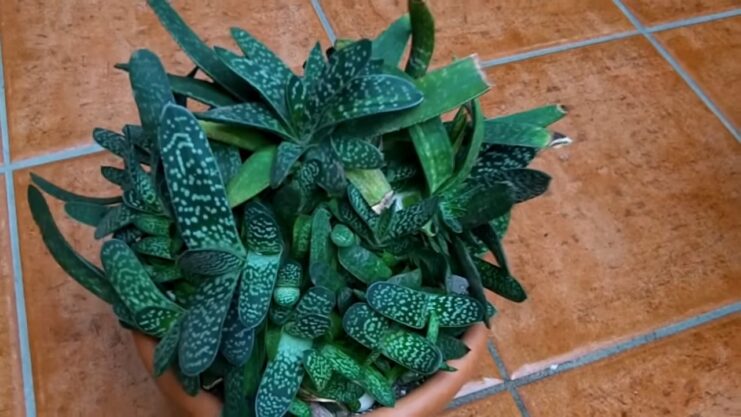
Gasteria, another South African native, is often confused with Aloe Vera. It has the same thick, fleshy leaves arranged in a rosette form. However, its leaves are typically flatter, and the surface can have a rough texture.
Gasteria is a genus of slow-growing succulents named for the stomach-like shape of their flowers (“gaster” is Latin for “stomach”). These South African natives are drought-tolerant and require minimal care, similar to Aloe Vera. However, they generally prefer shade or indirect light, unlike most succulents that crave sun. They can be propagated through leaf cuttings or offsets.
4. Snake Plant (Sansevieria)
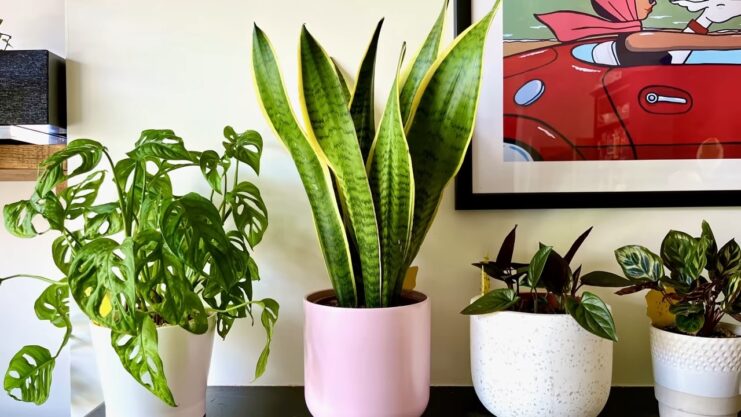
Although it doesn’t have the same rosette form, the Snake Plant is often mistaken for Aloe Vera due to its upright, pointed leaves. The major difference is the Snake Plant’s leaves are usually variegated with a yellow or white edge.
Snake plants, also known as mother-in-law’s tongues, are incredibly hardy and adaptable. These plants are excellent indoor plants as they can tolerate low light levels and irregular watering. An added bonus is their air-purifying qualities — they’re known to remove toxins such as formaldehyde and benzene from the air.
5. Yucca
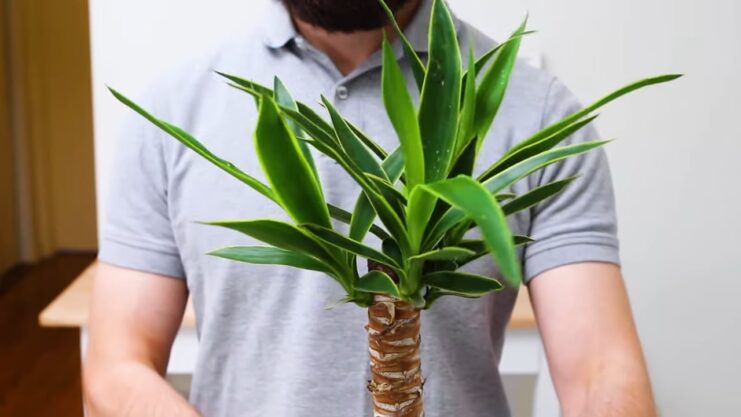
Yucca plants have long, pointed leaves similar to Aloe Vera. However, their leaves are generally thinner, and Yucca can grow into a tree-like form, while Aloe Vera remains a low-growing succulent.
Yuccas are a type of perennial shrub characterized by their tough, sword-shaped leaves and large terminal panicles of white or whitish flowers. They’re often used in landscaping for their striking architectural form and low maintenance requirements.
6. Spider Aloe (Aloe x spinosissima)
Spider Aloe is a hybrid between Aloe and Gasteria. It resembles Aloe Vera with its pointed, spiky leaves but typically has more spots and a different color, usually a more vibrant green or reddish hue.
Spider Aloe, sometimes referred to as the Gold Tooth Aloe, is a hybrid species characterized by its spiny, tooth-edged leaves. In late winter and early spring, Spider Aloe can produce tall, slender stems topped with bright orange-red flowers.
7. Aeonium
Aeoniums have a similar rosette form and thick leaves like Aloe Vera. They differ in color, which can range from green to deep purple, and in the way they grow, often forming branching shrubs.
Aeoniums, native to the Canary Islands, are rosette-forming succulents that come in a surprising range of shapes, sizes, and colors. They’re unique among succulents for their tree-like growth pattern, often producing long, arching stems covered with rosettes of leaves. Unlike many succulents, Aeoniums are winter growers and prefer cooler temperatures and a bit more moisture.
8. Echeveria
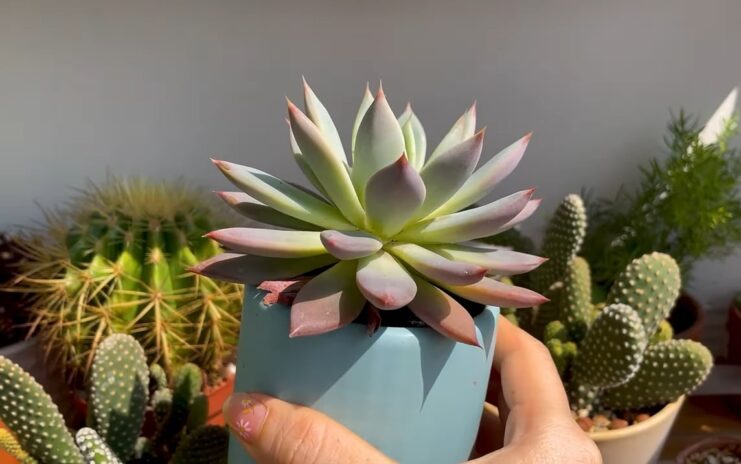
Echeverias are popular succulents that often get mistaken for Aloe Vera. They share a similar rosette form, but Echeveria leaves are usually rounder and come in a wider range of colors.
Echeverias are one of the most popular types of succulents, known for their stunning rosettes. They come in a range of colors, from blue-green to deep purple, and even pink. Echeverias produce bell-shaped flowers on long stalks during the growing season. These Mexican natives prefer bright light and require well-draining soil.
9. Sotol (Dasylirion)
Sotol’s long, slender leaves may initially resemble Aloe Vera, but a closer look reveals that Sotol leaves have a unique serrated edge, unlike Aloe Vera’s smoother margins.
This specie is a desert plant native to the southwestern United States and northern Mexico. Also known as Desert Spoon, Sotol features a dense rosette of narrow, linear leaves with serrated margins. Each leaf ends in a sharp, needle-like tip.
This plant is extremely drought-tolerant and thrives in full sun. A fascinating fact about Sotol is that its heart and flower stalk are used in making a distilled spirit, also named Sotol.
10. Red Hot Poker (Kniphofia)
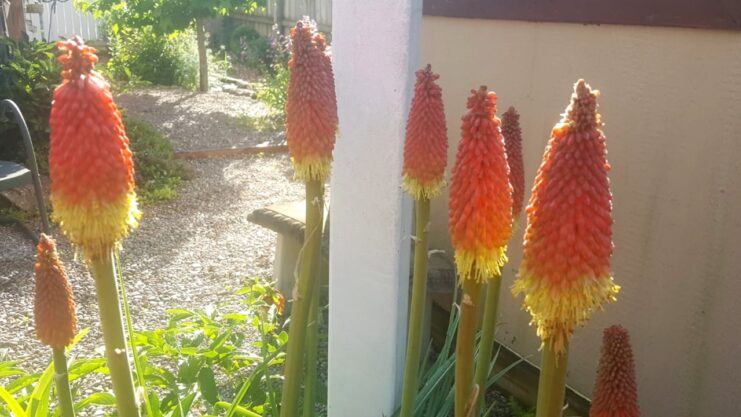
Red Hot Poker is a plant with long, thin, aloe-like leaves. However, it’s easily distinguishable from Aloe Vera by its distinctive fiery-colored flower spikes that, as the name suggests, resemble a hot poker.
These hardy perennials are native to Africa and are attractive to hummingbirds, making them an excellent choice for wildlife gardens. Red Hot Poker plants prefer sunny locations and well-draining soil. They are quite tolerant of drought conditions once established.
11. Stonecrop (Sedum)
Stonecrop, or Sedum, is a diverse group of succulents. Some species have a similar appearance to Aloe Vera with their fleshy leaves, but the differences lie in their flowering patterns and the often glossier look of Sedum leaves.
Many species are grown for their attractive foliage and star-shaped flowers. These versatile plants are often used in rock gardens, borders, or as ground cover.
7 Poisonous Plants That Look Like Aloe Vera
1. Euphorbia
Many Euphorbias, like the popular Crown of Thorns, look similar to Aloe Vera with their fleshy leaves and thorny appearance. However, all parts of these plants are poisonous if ingested and the sap can cause skin irritation.
Euphorbia is a large and diverse genus of plants with over 2,000 species. They’re often mistaken for cacti because many species have a similar appearance and contain a milky sap.
2. Foxglove (Digitalis)
While not as similar in appearance, the leaves of young Foxglove plants can be mistaken for Aloe Vera.
These are known for their beautiful, bell-shaped flowers that grow on tall spikes. All parts of the Foxglove plant are toxic if ingested, containing compounds that affect the heart. They can cause a range of symptoms, from nausea and headache to irregular heartbeat and even death.
3. Agave (Some Species)
While we’ve already mentioned Agave as a look-alike, it’s important to note that some species, like the Giant Agave, have sap that is considered mildly toxic if ingested.
Their sap can cause skin irritation, and if ingested, may cause vomiting or other digestive issues. Additionally, the sharp points of Agave leaves can cause physical injury.
4. Aloe Elegans (Tulista Pumila)
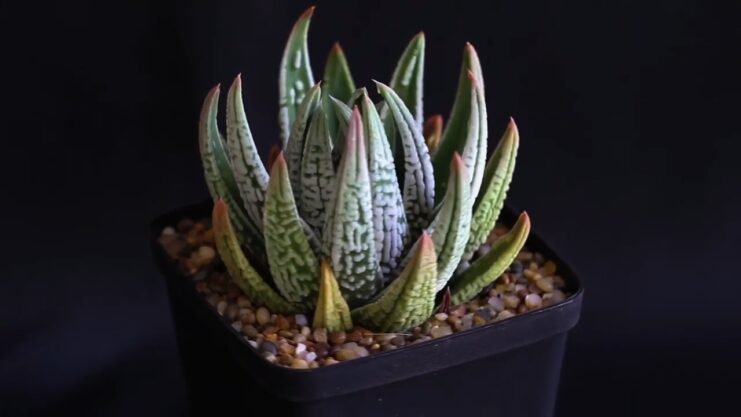
Aloe Elegans closely resembles Aloe Vera, but unlike the latter, it is poisonous if ingested. It can cause vomiting, diarrhea, and other digestive issues.
5. Lily of the Valley
Though the mature Lily of the Valley plant doesn’t look much like Aloe Vera, its young shoots can be mistaken for Aloe plants. This plant is highly poisonous and can be lethal if ingested.
6. Mountain Aloe (Aloe Marlothii)
Mountain Aloe has long, pointed leaves that resemble Aloe Vera, but it is considered harmful if ingested. Additionally, it can cause skin irritation.
7. Star of Bethlehem (Ornithogalum)
The Star of Bethlehem has elongated leaves that can be mistaken for Aloe Vera. It’s important to note that this plant is poisonous, especially the bulbs, and can cause serious health issues if ingested.
Final Words
We hope you’ve enjoyed this deep dive into the world of Aloe Vera look-alikes, and we trust this guide will assist you in distinguishing between these fascinating species. As you continue exploring the vast and varied world of plants, always remember to enjoy their beauty responsibly and safely. The next time you spot a spiky, rosette-forming plant, you’ll now be well-equipped to discern whether it’s a harmless Aloe Vera, a similar succulent, or something potentially more dangerous.
Plant identification may seem like a complex task, but as you delve deeper, you’ll discover the joy and satisfaction of learning about the myriad shapes, sizes, and forms that nature offers us. Whether you’re a gardening novice or a seasoned green thumb, understanding the wide array of plants that resemble Aloe Vera expands your horticultural knowledge and enriches your gardening experience.

